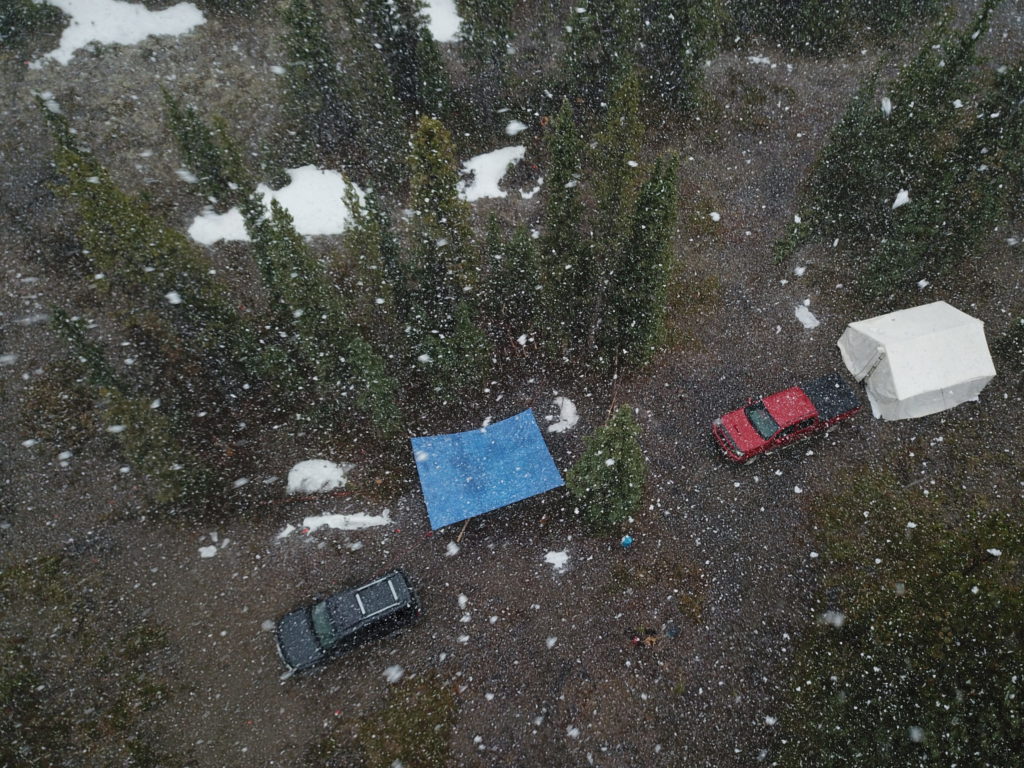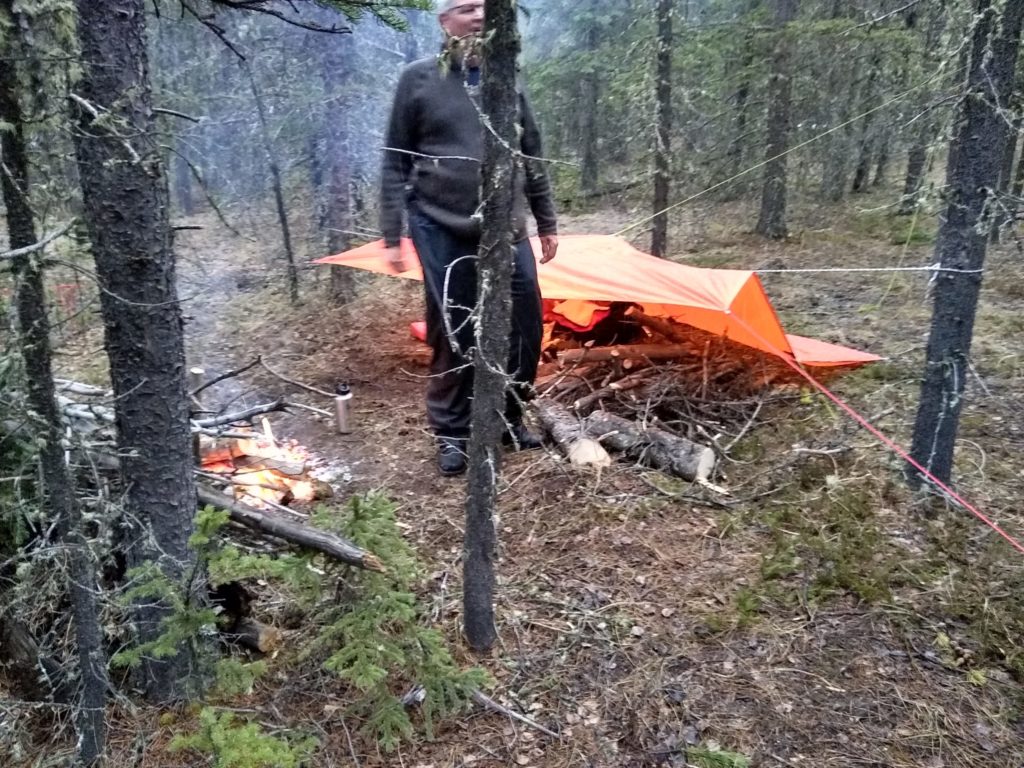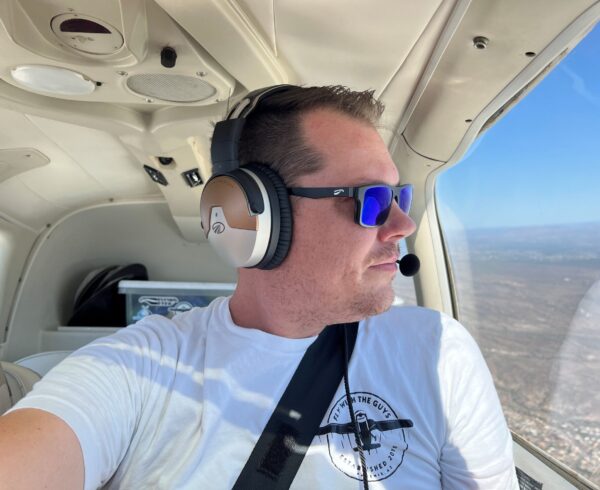Lightspeed recently supported an adventurous flying club in Alberta, Canada to share our connected passion for general aviation safety and survival of off airport landings. The Foothills Flying Club will be hosting a Survival Shakedown Silent Auction to raise enough funds to purchase an advanced Survival gear kit for the Club. And Lightspeed has donated a Zulu 3 to help them achieve this important goal.
The FFC hosted a survival course for 10 aviators in early April in the Canadian Rocky Mountains – no easy camping trip to say the least. They were put through below zero Celsius temperatures and harsh environments to make it through the course, and they all walked away with much more knowledge and faith in their abilities.
Here is a great recap told by Foothills Flying Club member Ronan Court.
Foothills Flying Club 2021 Survival Shakedown
Calgary, Alberta, Canada

Pilots are trained to fly the plane until the last piece of metal stops moving, but what happens when you find yourself waiting for rescue somewhere you don’t want to be?
Based in High River, Alberta, the Foothills Flying Club’s (FFC) membership has easy access to scenic flights through the Canadian Rocky Mountains. While they are beautiful, the mountains are among the most demanding environments to survive if one encounters an unplanned landing.
Emergency Location Transponders (ELT) can typically be found within a week if they are activated. A Personal Locator Beacon (PLB) such as SPOT GPS or Garmin InReach closes that window to about 72 hours. A pilot finding themselves in an off-airport landing may have to spend up to a week waiting for SAR. Having experience and education in survival techniques increases the chances that the pilot and their passengers will be found alive and well.
The FFC decided in January that it would put on a survival course for aviators. Pilots are trained not to crash, and when everything goes wrong, they are prepared to land the plane in the least damaging manner. We wanted to see this training go past the wheels-down time and get the pilot and their passengers to the time of rescue. Organizing the Shakedown is the club’s way of helping the aviation community accomplish this.
Running the course in the early spring allowed participants to feel uncomfortable through the cold night but not exposing them to the potentially damaging, sub-zero winter nights or having the summer’s warmth to their advantage. A survival situation will not present itself when the weather is perfect, and FFC wanted to test the participant’s mettle.
We ran a virtual classroom session with our instructor at the start of April. During this session, our instructors went through the basic survival techniques and attitudes that will keep a downed pilot alive longer. We were also given a minimum required gear list to procure before the hands-on survival in the woods.
On the day of, we met in Cochrane. We convoyed to the location in the Ghost Wilderness Area (approximately one hour west of Cochrane). Upon arrival, attendees received breakfast and a pair of socks from PeakEats. After a briefing, the participants were sent to find a site and set up camp. Because of the looming third wave of COVID-19 in our area, this was a textbook example of outdoor social distancing! Snow, rain, and a combination of the two made frequent appearances throughout the afternoon and evening, making it a little more complicated to set up camp. For some, the wet leaves underfoot made a slippery hike to find wood. We all convened back at base camp (our instructor’s recovery tent, if anyone needed it) for a session on fire starting and knot-tying. Both were the two main culprits in the early struggles experienced by some. Everyone was sent back to their sites for dinner (fireside, of course), and we settled in for the night.
From about 23:00 – 03:00, the snow and rain persisted with temperatures just below zero Celsius. The precipitation stopped, but the cold stayed until 06:30 when the sun started to break through the trees. Despite the environmental struggles, everyone was in high spirits during the debrief. For the most part, the chief complaint was being too cold and expecting more sleep than was received.
“If we don’t debrief and learn from what we just did, we don’t learn at all.” ~ Brent Peters, Instructor – 2021 Survival Shakedown
The biggest issue for most people was the cold and how to manage it. Some people re-lit the fires that they had let burn out. Others kept moving to stay warm. 75% of the participants kept their fire going throughout the night. Many people used emergency blankets (sometimes called space blankets) to insulate themselves along with fire.
The biggest issue for most people was the cold and how to manage it. Some people re-lit the fires that they had let burn out. Others kept moving to stay warm. 75% of the participants kept their fire going throughout the night. Many people used emergency blankets (sometimes called space blankets) to insulate themselves along with fire.
The group unanimously agreed that a tarp is the most essential item in a survival kit. Their uses are nearly endless, and they helped to shield participants from the wind and precipitation. The second most important item? Multiple means of fire starting. Some people used a small lighter, while others used Spark Lite fuel cubes with flint and steel, but in each case, the person had a second method of fire starting. With a fire, you have a purpose when boredom and worry set in. A mantra of “I need to keep this fire going” keeps the brain and body busy, providing warmth and a way to purify water (if you have a pot/container to boil water in).
Possibly the most important lesson learned was the need for versatility. For example, have a tarp that you can use as a windbreak and an overhead shelter at the same time. Have flint and steel as well as a lighter. Within a few days of our course, a man was attacked and killed by a bear in the wilderness area near where we were doing our survival course. Given this, there is much to be said for carrying bear spray in the survival kit too.
During the Shakedown, we asked participants two questions at three different times (14:00, 18:00, and 23:00).
| On a scale of 1-10, how confident are you in your setup? | On a scale of 1-10, how confident are you that you will make it to the time of rescue? |
| 10 – 10 – 10 | 10 – 10 – 10 |
| 10 – 10 – 10 | 10 – 10 – 10 |
| 4 – 10 – 10 | 10 – 10 – 10 |
| 10 – 10 – 10 | 10 – 10 – 10 |
| 10 – 10 – 10 | 10 – 10 – 10 |
| 10 – 10 – 10 | 10 – 10 – 10 |
| 10 – 10 – 10 | 10 – 10 – 10 |
| 4 – 7 – 10 | 10 – 10 – 10 |
| 10 – 10 – 10 | 10 – 10 – 10 |
| 4 – 8 – 10 | 10 – 10 – 10 |
It is worth noting that the three participants who were not confident in their setup (highlighted in orange) were still optimistic that they would make it to the time of rescue. The participants quickly realized the need for positive attitudes. Although they may have faced struggles with their equipment or their setups, everyone stayed positive, coming away with the knowledge of how to use the essential gear included in their survival kit.
Follow along with this group of aviators as they continue to spread the importance of survival importance in case of an off airport landing. They can be followed on Instagram and Facebook.




































I happen to have a bit of experience in surviving airplane crashes. On January 27, 1995 me and 4 friends were traveling from Edmonton to go cat skiing in Revelstoke. We crashed but all of us survived with different injuries. A series of events caused the Cessna 337 we were flying in, to quit flying and bonk into the side of a mountain. It was unpleasant.
We had a very experienced pilot and a well equipped airplane and survival kit. It had a perfectly functioning ELT.
We were rescued early the next morning by the world’s best search and rescue people, Canada’s SARTECHs.
If you wish to imagine that we had an easy night just hanging around waiting to be rescued, you are wrong.
What you have portrayed is a nice camping trip in the wilderness. Everyone involved knew that they were going to get home and no one was injured.
Some of the points are indeed spot on. Keeping warm and dry is obviously important. Assuming that there will be plenty of wood lying around is fine but perhaps it won’t be. Assuming that everyone will be uninjured is another big stretch. Things change a great deal when people are injured or dead.
All that said, it is good to at least try to be prepared and have a plan in the event of a crash. I would offer to speak to your group and perhaps my buddy Grant would too, to tell you about our experience.
On the plus side, the article is well written and nicely documented.